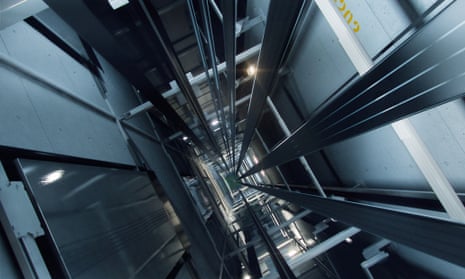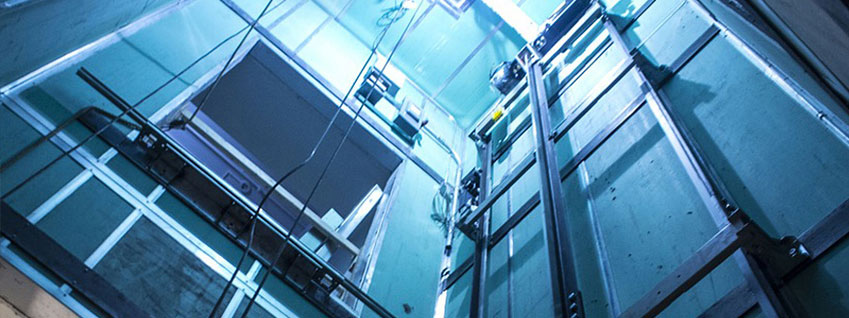Compare Disabled Platform Lifts Prices UK: Affordable Options for Every Requirement
Compare Disabled Platform Lifts Prices UK: Affordable Options for Every Requirement
Blog Article
Exploring the Globe of Elevators: Usual Problems Faced by Numerous Lift Mechanisms
As we navigate with the vertical transportation systems of modern structures, elevators attract attention as a crucial element of our day-to-day lives. Nevertheless, behind their smooth operation exists a world of detailed systems that can occasionally come across challenges. From hydraulic elevators to traction systems and machine-room-less styles, each lift kind includes its collection of typical problems. Comprehending these difficulties is essential for making certain the smooth performance of these vital systems. Allow's discover the intricacies that underlie the operation of elevators and the possible issues that can emerge, losing light on the intricate web of lift devices.
Hydraulic Lifts
Hydraulic elevators, typically liked for low-rise buildings, use fluid stress to regulate the activity of the lift vehicle (lift repair companies). This system includes a hydraulic pump pushing oil into a cyndrical tube, triggering the lift to relocate in the wanted instructions. While hydraulic lifts are recognized for their quiet and smooth procedure, they do come with their very own set of usual problems
One common issue with hydraulic elevators is oil leakage. The seals in the hydraulic system can put on out with time, leading to oil seepage. If left unaddressed, this not just creates a mess however can likewise influence the elevator's efficiency. Furthermore, concerns with the control system, such as damaged valves or a malfunctioning pump, can create disruptions in the elevator's movement.
Normal upkeep and punctual fixings are vital to make certain the smooth functioning of hydraulic elevators. By dealing with these common problems proactively, structure owners can minimize downtime and ensure the security and efficiency of their upright transport system.
Traction Elevators
When taking into consideration vertical transport systems in buildings, one more typical type aside from hydraulic elevators is the grip lift. Traction lifts operate making use of a system of ropes and counterweights that move the elevator auto by grasping onto the hoist ropes. This system enables smoother and much faster vertical transportation compared to hydraulic systems.
One of the usual problems faced by traction lifts is rope wear. The continuous movement of the ropes within the traction system can bring about use and tear in time, potentially creating the elevator to malfunction or come to be unsafe for usage. Regular examinations and maintenance of the ropes are necessary to make certain the elevator's appropriate performance and safety.
An additional problem that grip lifts may come across is connected to the control system. Problems with the control system can result in concerns such as erratic motion, hold-ups in feedback times, or perhaps complete shutdowns. Normal screening and maintenance of the control system are important to avoid such issues and guarantee the lift's integrity.
Machine-Room-Less (MRL) Elevators

One of the essential parts of MRL elevators is the portable gearless traction equipment that is set up within the hoistway. This device successfully drives the elevator automobile without the demand for bulky equipment found in traditional grip elevators. Furthermore, MRL lifts typically utilize a counterweight system to balance the vehicle, additional boosting their energy performance.
In spite of their benefits, MRL elevators may face obstacles related to repair and maintenance as a result of the constrained space for devices installment. Accessibility for servicing elements within the shaft can be limited, needing specialized training for professionals. Appropriate upkeep timetables and normal examinations are essential to make sure the continued smooth operation of MRL lifts.
Overloading and Weight Limitation Issues
Are lifts furnished to deal with excess weight tons effectively and securely? Overwhelming and weight restriction problems are important problems in lift operations. Elevator manufacturers design raises with particular weight capabilities to make sure traveler security and equipment longevity. Exceeding these weight limits can bring about numerous issues, consisting of mechanical failures, delays, and safety threats.
When lifts are strained, it puts excessive strain on the motor, cables, and various other elements, possibly creating failures or breakdowns. Safety devices such as sensing units and overload sensors are in location to prevent lifts from moving if they detect excess weight. Additionally, surpassing weight go to this web-site restrictions can cause boosted energy consumption and wear and tear on the lift system.
To minimize overloading concerns, developing supervisors should plainly present weight restrictions in lifts and enlighten occupants on the significance of adhering to these constraints - lift repair companies. Normal upkeep checks by qualified technicians can additionally help make sure that elevators are running within secure weight parameters. By dealing with overloading and weight limitation issues proactively, structure proprietors can enhance lift safety and performance
Electrical System Failures
Going beyond weight restrictions in lifts can not only result in mechanical concerns yet also potentially add to electric system failings within the lift framework. Electrical system failures are an important problem in elevator operation, as they can cause unforeseen closures, breakdowns, and even safety hazards. One common electric issue is the overheating of parts as a result of excessive current circulation created by straining the lift past its ability. This can bring about harm to the electric motor, circuitry, or control systems, causing pricey fixings and downtime.
In addition, power rises or changes in the electrical supply can additionally interrupt the lift's procedure, affecting its efficiency and security. These electric disturbances can harm sensitive elevator her latest blog parts such as control board, circuit boards, or sensors, leading to system failures. Normal maintenance and examinations are critical to identify and resolve prospective electric problems without delay, making sure the effective and secure operation of lift systems. By adhering to weight restrictions and carrying out regular electric system checks, building proprietors can reduce the danger of electric failures in elevators.
Final Thought

Hydraulic elevators, often liked for low-rise buildings, use fluid stress to manage the activity of click for source the elevator vehicle.When considering upright transportation systems in structures, another usual type aside from hydraulic elevators is the grip lift. Traction lifts operate using a system of ropes and weights that relocate the lift cars and truck by clutching onto the hoist ropes. Unlike typical elevators that require a different device area to house the devices, MRL lifts incorporate most of the components within the shaft, removing the need for a specialized equipment room.In verdict, lifts face common problems such as hydraulic malfunctions, traction system failings, and electrical system issues.
Report this page